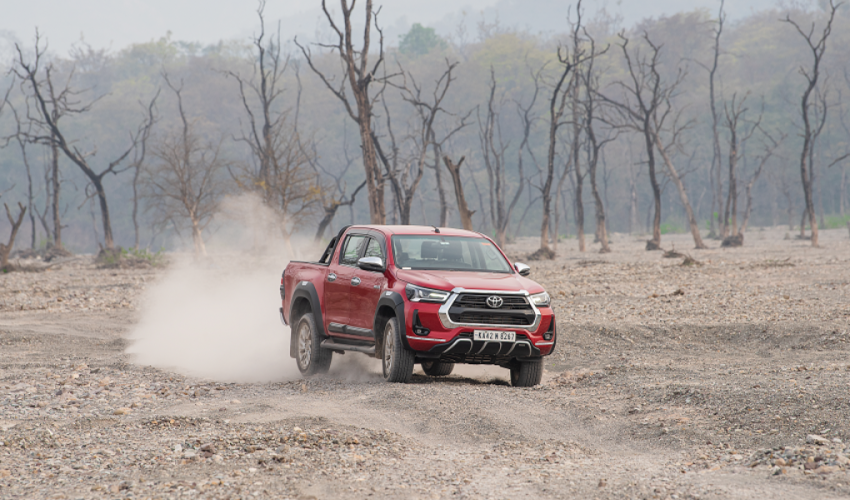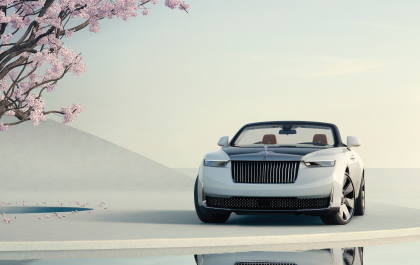Despite its price and lack of creature comforts, Toyota’s go-anywhere truck
offers a ton of reliability and off-road spirit
By Afzal Rawuther
The Toyota Hilux’s reputation precedes itself. It might not sell in the numbers that some North American trucks do, but it is universally recognised as a reliable pick-up truck that can take you to the corners of the world. Whether it’s the Taliban mounting machine guns in its bed, insurgents in North Africa waging wars with it in the desert, or even conservationists using at as their vehicle of choice in ecologically sensitive areas, the Hilux consistently finds itself in applications that most SUVs simply can’t take on. The nameplate itself has been around for decades now, and judging by the sheer number of perfectly preserved specimens in some of the harshest conditions on Earth, a Hilux is clearly builed to last. In India, it is being offered solely as a dual cab pick-up truck. And that isn’t a bad thing at all, given its positioning in the country.
There’s very little in our market that’s meant for the same purposes as a Hilux. Sure, there are a few SUVs that are mighty capable, but not many are as practical as a pick-up truck, especially one that’s comfortable as well as rugged. With a Hilux, you can easily haul bicycles, your scuba diving paraphernalia, or a full camping kit through truly unforgiving terrain.
Toyota wanted us to experience a bit of what its users would typically put the vehicle through. On a carefully curated route meandering through the Rajaji National Park, we were asked to tackle some challenging trails, rocky sections, steep descents along very narrow trails and a handful of obstacles on a partly dry riverbed.
The car features plenty of elements from the Fortuner, including the ladder frame chassis, independent front suspension and 2.8-litre diesel engine, mated to either a 6-speed manual or automatic gearbox. The contrasts begin with the proportions — it has a 3085mm long wheelbase (340mm more than its cousin) and a relatively long rear overhang. This reflects in the departure angle, which is 26 degrees (the approach angle is a generous 29 degrees). With 220 mm of ground clearance, we also saw the pick-up truck capably wade through 700mm of water.
As we got going on the banks of the river Ganga, it was evident that it benefits from all that it inherits from the Fortuner. Through well-paved roads, the steering started off heavy at slow speeds, but improved as we got faster. While it was unbothered over rocky sections and forged ahead at a steady clip, the passengers inside were thrown about considerably. Part of the problem was the lack of weight at the back, but pickups — with their leaf spring suspensions — are often guilty of a bouncy, fidgety ride. I don’t hold it against the pick-up truck though, since the robustness and serviceability that a leaf spring suspension offers cannot be matched.
There’s a healthy amount of power (204 PS) available from the diesel motor, but what you’d appreciate a whole lot more is the torque. There’s 420 Nm in the manual variant and a solid 500 Nm with the auto gearbox and crucially, all of it is available from as low as 1600 rpm and that helps make light work of the terrain.
As we made our way down to the river bed, the hill-descent control was put to good use. Helped by the traction control, all I needed to do was engage the setting and switch to 4L and manual mode. The Hilux performed a controlled descent with no intervention from my end apart from steering inputs. Then, came the scarier obstacles. The side inclines were rather steep and meant that the pick-up truck and I were tilted to one side at 45 degrees or so, but it held its own, with the axle articulation helping us navigate through a series of uneven deep ditches. Next up was the steep ascent. Plentiful reserves of torque meant that I ended up using only about 35 percent of the throttle travel even at the steepest point of the incline, where traction control seamlessly kept the car on course.
With its off-road ability examined, we spent some time parked by the river. This gave us an opportunity to evaluate the interiors of a pickup that costs Rs 37.90 lakh (ex-showroom). Plastics on the inside are of the hard-wearing type, and that means that they aren’t exactly plush. The cabin is made to be utilitarian and there aren’t a lot of creature comforts on offer. For the price, you get comfortable, supportive seats, a high driving position, an infotainment display that does feel somewhat outdated and a few connected car features. Space at the back is sufficient for three, but the backrest is very upright. The deck, while not as large as on single cab versions, is sufficient for most uses and can handle a payload of 435 kg.
Relishing the quick tea break, one thing became obvious to me: what I had experienced over the course of an afternoon was the sort of adventure a lot of people would die for. As India gets crisscrossed by an increasing number of expressways, the slow exercise of driving through a trail to explore nature at its finest will become increasingly uncommon. While the price for the Hilux seems prohibitive, it does offer the sort of go-anywhere ability and reliability that some buyers would consider truly priceless.
Reproduced with permission from Mansworldindia.com













